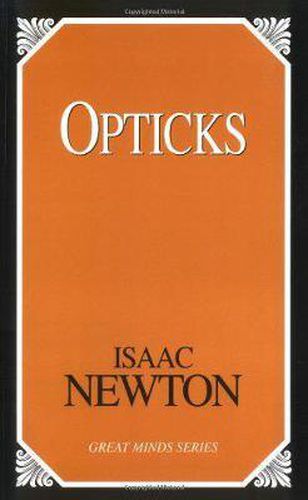Readings Newsletter
Become a Readings Member to make your shopping experience even easier.
Sign in or sign up for free!
You’re not far away from qualifying for FREE standard shipping within Australia
You’ve qualified for FREE standard shipping within Australia
The cart is loading…






Before Newton completed his masterpiece, The Principia Mathematica , he had established his reputation with this treatise on the properties of light. Though on a narrower topic, this work is as impressive in its own right as The Principia , for it provided a scientific analysis of light that became the basis of our modern understanding. Based on experiments in which a beam of light was passed through a prism, Newton showed that white light was complex and could be analysed as a blend of the various colours of the spectrum. Divided into three books, the first describes his experiments with the spectrum. The second deals with the ring phenomenon, in which concentric rings of colours appear in the thin layer of air separating a lens and an underlying plate of glass. The third book describes his work on diffraction. Also discussed is Newton’s theory that light consists basically of ‘material corpuscles’ in motion. Though clearly intended for fellow scientists this classic monument of modern physics is surprisingly readable and understandable for nonspecialists.
$9.00 standard shipping within Australia
FREE standard shipping within Australia for orders over $100.00
Express & International shipping calculated at checkout
Before Newton completed his masterpiece, The Principia Mathematica , he had established his reputation with this treatise on the properties of light. Though on a narrower topic, this work is as impressive in its own right as The Principia , for it provided a scientific analysis of light that became the basis of our modern understanding. Based on experiments in which a beam of light was passed through a prism, Newton showed that white light was complex and could be analysed as a blend of the various colours of the spectrum. Divided into three books, the first describes his experiments with the spectrum. The second deals with the ring phenomenon, in which concentric rings of colours appear in the thin layer of air separating a lens and an underlying plate of glass. The third book describes his work on diffraction. Also discussed is Newton’s theory that light consists basically of ‘material corpuscles’ in motion. Though clearly intended for fellow scientists this classic monument of modern physics is surprisingly readable and understandable for nonspecialists.